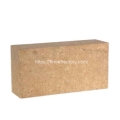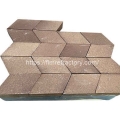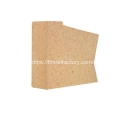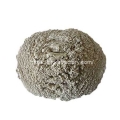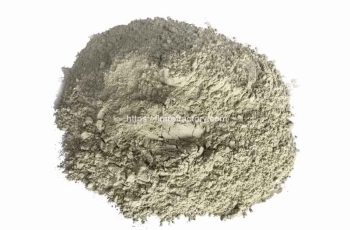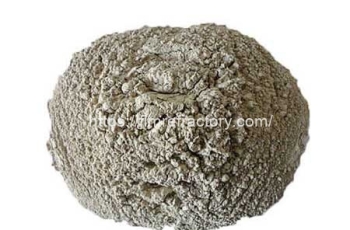- Performance. Innovation. Worldwide. Your trustworthy Refractories Manufacturing Partner--Fireramo
- +86 175 3769 7777
Magnesia Mortars
- Category: Refractory Mortar
- |
- Author: Fireramo
Magnesia Mortar is a kind of refractory mud made of MgO as the main raw material, which has the advantages of high strength, high temperature resistance, corrosion resistance, etc.
- Origin: China
- Product Name: Fireramo Magnesia Mortar
- Type: Refractory Material
- Shape: Powder
- Transport Package: Export Ton Bags
- Production Capacity: 5000ton/Month
Search
Contact
High quality refractory bricks
Product Details
Magnesia Mortars for Sale
Description of Fireramo Magnesia Mortar
Magnesia refractory mortar is a kind of unshaped refractory material made of MgO as the main raw material. Magnesium refractory mortar has the advantages of high strength, high temperature resistance, corrosion resistance, etc. It is suitable for masonry magnesium bricks, Mg-Al bricks, Mg-Cr bricks, and magnesium bricks used for patching the furnace wall.
Magnesium mortar is used for masonry magnesia refractory brick unshaped refractory material, the quality of the refractory mortar determines the quality of the entire kiln construction. The destructive force of the kiln under high temperature conditions often starts with the refractory clay between the weak refractory bricks, therefore, to improve the service life of the kiln you must choose a good performance refractory clay.
Fireramo offers you six types of magnesium refractory mortars, QN-1, QN-2, QN-3, QN-4, QN-5 and QN-6, with MgO contents ranging from 25% to 85% and partially supplemented with Al2O3, which offer excellent properties.

Characteristics of Fireramo magnesia refractory mortars
High strength
Magnesia refractory mortar has high compressive, flexural and tensile strengths, which can withstand large external forces and high temperature environments.
High temperature resistance
Fireramo magnesia refractory mortar can withstand high temperatures and has a high degree of refractoriness.
Corrosion resistance
Magnesium mortar has good chemical stability, can resist the corrosion of acid and alkali and other chemical substances.
Convenient construction
Magnesium mortar can be cut, stirred and transported at will, so the construction is convenient and quick.
Application of Fireramo Magnesia mortar
The application of magnesium refractory mortar is mainly in the lining of high-temperature industrial furnaces and kilns in the fields of iron and steel, cement, chemical industry, metallurgy and so on, such as iron smelting furnaces, converters, electric furnaces and coal-fired furnaces, etc. It can effectively resist the corrosion under high temperature. It can effectively resist chemical erosion and mechanical abrasion at high temperatures and protect the walls of industrial furnaces and kilns. In addition, magnesium refractory mortar can be used in ceramic fiber modules to enhance their insulation properties and thermal shock resistance.
The advantages of magnesium refractory mortar include high strength, high temperature resistance, corrosion resistance, and good construction performance. The preparation method includes selecting suitable Al2O3, mixing and stirring it with appropriate amount of water and binder to make the mud, and adding appropriate amount of additives during the masonry process to improve the performance of the refractory mud.
Specifications of Fireramo Magnesia Refractory mortar
Item | Magnesia Mortar | ||||||
QN-1 | QN-2 | QN-3 | QN-4 | QN-5 | QN-6 | ||
MgO(%) ≥ | 82 | 85 | 60 | 25 | 50 | 75 | |
Al2O3(%) ≥ | / | / | / | 35 | / | 6 | |
Cr2O3(%) ≥ | / | / | / | / | 4 | / | |
C(%) ≥ | / | / | 10 | 7 | / | / | |
Bonding Time(min) | 2 | 2 | 2 | 2 | 2 | 2 | |
Grain Size% | +0.5mm | 2 | 2 | 2 | 2 | 2 | 2 |
-0.088mm | 65 | 65 | 65 | 65 | 65 | 65 | |
Water Adding% | 28~33 | 28~33 | 28~33 | 28~33 | 28~33 | 28~33 | |
Adhesive Strength MPa | 110℃×24h | 5~20 | 5~20 | 5~20 | 5~20 | 5~20 | 5~20 |
1400℃×3h | 25~40 | 25~40 | 25~40 | 25~40 | 25~40 | 25~40 | |
Specializing in refractory materials for over 20 years, we provide professional refractory solutions for the global high temperature industry.
Related Posts:
Theme By Fireramo
